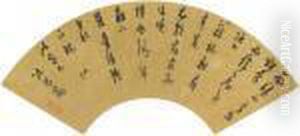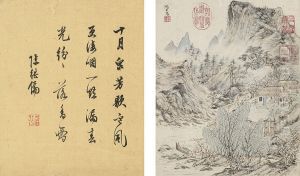Chen Jiru Paintings
Chen Jiru, also known as Chen Hongshou, was a prominent Ming dynasty literati painter, calligrapher, and writer. Born in Zhuji, Zhejiang Province, Chen was deeply influenced by the cultural and intellectual milieu of his time. He lived through the transition from the Ming dynasty to the Qing dynasty, a period marked by political turmoil and social upheaval, which deeply impacted his life and work. Chen Jiru is particularly noted for his accomplishments in calligraphy and painting, as well as his literary contributions, which include essays and poetry.
Chen's artistic style is characterized by its elegance and refinement. His paintings often featured landscapes, flowers, and birds, executed with a delicate touch and a profound sense of composition. His calligraphy was highly regarded for its fluid and graceful style, embodying the spirit of traditional Chinese aesthetics. Chen Jiru's literary works, on the other hand, reflected his contemplative nature and his scholarly pursuits. He was an avid collector of books and art, and his essays often delve into the topics of art criticism and the philosophical underpinnings of aesthetics.
Despite his achievements, Chen Jiru's life was not without challenges. The fall of the Ming dynasty and the subsequent rise of the Qing dynasty created a context of cultural and intellectual reevaluation. Chen, like many of his contemporaries, grappled with the implications of these changes on the identity and traditions of Chinese literati culture. His works thus not only stand as testament to his personal talent and intellectual pursuits but also serve as a window into the broader cultural and historical dynamics of his time.
Chen Jiru's legacy is enduring, with his art and writings continuing to be studied and appreciated for their contribution to Chinese cultural history. He remains a figure of significant interest for scholars of Ming-Qing transition period art and literature, offering insights into the complexities of cultural preservation and transformation amid societal change.

















